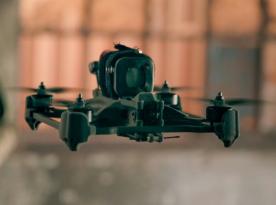A Ukrainian military research center specialized on enemy equipment captured during the Ukrainian-russian war investigated the insides of recently downed drones of the Shahed-136 and ZALA 421-16E types. The results of their work was announced during a briefing at the Military Media Center.
"Our studies show that the latest samples of the Shahed-136 and ZALA 421-16E have a number of 'modifications', which testify to the structural degradation and significant problems of the russian military industry in the field of production, modernization and maintenance of unmanned aerial vehicles," summed up Andrii Rudyk, a representative of the research center.
Read more: Ukrainian Intelligence Service Has Dismantle Iranian Mohajer-6 and Found Something Unusual
He noted that while high-tech components are not available to russia due to the sanctions regime, it can still produce simpler electronics, such as transistors, resonators, resistors and relays. However, even here the russians already started having problems. In one of the latest Shahed-136 samples, investigators found a 30-year-old relay of "non-russian origin."
There was also a GSM-transceiver found in Shahed-136. This component, as explained, is meant to transmit and receive data in 3G and 4G standard channels. It was completely made of foreign components. The russians did not even bother to disguise the parts like their own: researchers suggest, it indicates that the device was made in a hurry.

By the way, iranians also stopped pretending like they have nothing to do with the Shahed drones. As a reminder, so far russians labeled the iranian-supplied loitering munitions as Geran-2 and claimed they were russian creations. But in one of the newer drones, Ukrainian engineers found an engine spark plug with MADO marking, one of iranian manufacturers. This is the first time iranian markings are found in Shahed-136. Earlier, the origin of the drones and its components was meticulously concealed.

Briefly, with ZALA 421-16E the situation is similar: none of its components were new, quite possibly, they were taken off other devices before getting into the russian drone, the researchers suggest.

These facts lead to the following conclusions: "First of all, the russian military-industrial complex is in general not capable of either independent full cycle of production of its own UAVs or maintenance of Iranian ones. Not only the basic components, but even the latest "modifications" are of foreign origin."
That means "despite the Kremlin's statements, international sanctions cause serious problems for the aggressor country" which is heavily reliant on imported parts. Especially in electronics, russians are forced to use worn microcircuits and "try hard searching workarounds to avoid sanctions and obtain even the simplest audio codecs."
Read more: The Life of American Astronaut Depends on the Intel Chip from AliExpress Used in russian Rocket for Tornado-S MLRS














